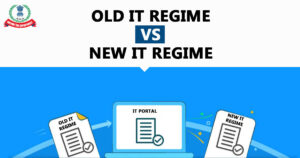 With the coming of the new tax regime, individuals have to not only declare the investment but also have to select the tax regime.
With the coming of the new tax regime, individuals have to not only declare the investment but also have to select the tax regime.
Right now, in India there are two tax regimes prevailing. The new tax regime and the old tax regime. The new tax regime was introduced in the Budget 2020. Under the new tax regime, most of the deductions from the total income have been done away with. However, this taking away of deductions was compensated by introducing lower tax rates at more broken-down slab rates.
The rationale behind the introduction of the new tax regime was to make tax filing simpler for individuals who make up a high number of taxpayers and contribute significantly to the tax collection.
The availability of more than one tax regime has, however, created a challenge for individuals, i.e., selection of more beneficial tax regime.
Usually, the majority of individuals who are actually salaried class of people have to submit an investment declaration at the beginning of the year so the employer can consider the future investment to be undertaken by the individuals and compute the taxable income and tax on that income and deduct the tax based on the computation.
Now with the coming of the new tax regime, the individuals have to not only declare the investment but also have to select the tax regime. The issue with the selection of the tax regime is that once it is selected at the beginning of the year, it can not be switched back to the other one during the FY. Therefore, selection of a tax regime has to be done very deliberately.
If, however, the individual has selected the tax regime incorrectly at the beginning of the year, then they do have a recourse at the time of filing the tax return. At the time of filing the tax return, it is again allowed to select the tax regime for the individuals. They need to just point out if they are opting for 115BAC (the section governing the new tax regime) or not.
Further, if they are opting out of the new tax regime and opting for the old one, they need to claim all the missed-out deductions and exemptions in the ITR they are filling. By doing so, the regime shall be changed. The selection and switching between regimes can happen every year for a salaried individual.
However, in case the individual has business income, the opting in and out of the tax regime becomes difficult. As for persons having business income, opting in and out of the new tax regime is a once in a lifetime affair. Therefore for the business person, the selection of regime becomes a very calculative exercise which has to be undertaken meticulously.
In short, the tax regime can be changed at the time of the filing the tax return.
Source: https://www.financialexpress.com/money/income-tax/income-tax-return-filing-how-to-switch-to-a-favourable-tax-regime/3106440/
© 2018 CA Chandan Agarwal. All rights reserved.